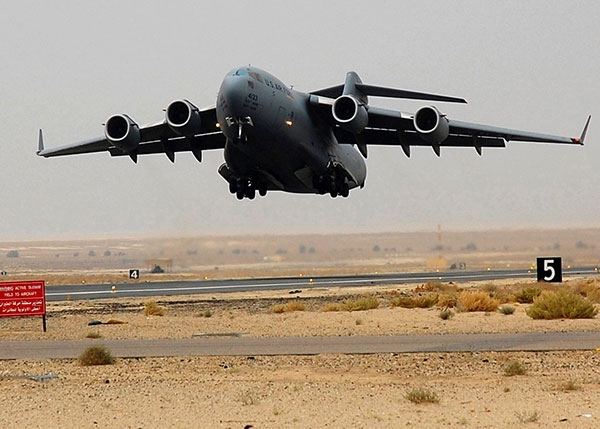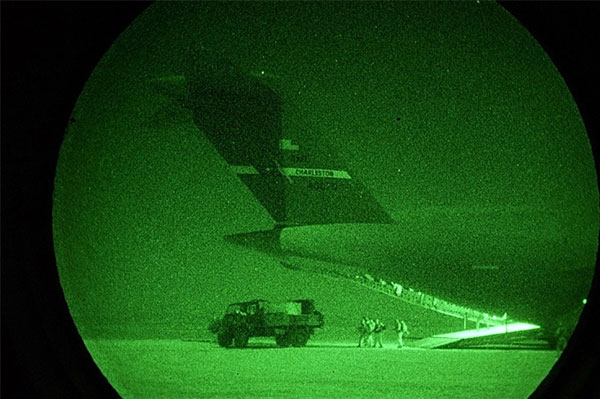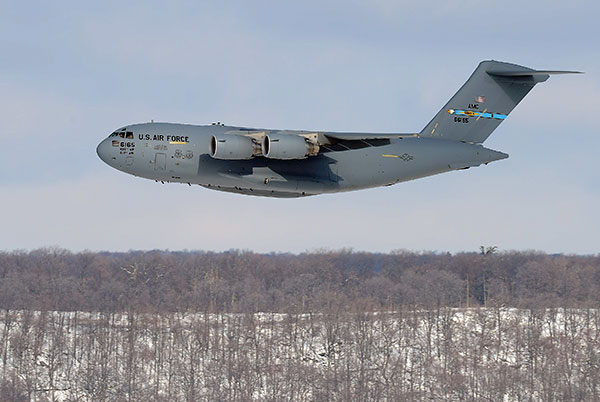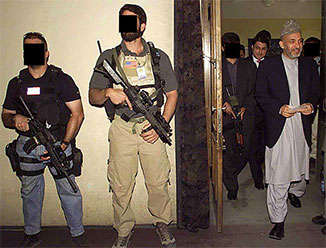C-17 Special Operations Low Level II
The United States Air Force maintains an elite cadre of C-17A crews trained to Special Operations Low Level (SOLL) II standard.
These aircrews fly modified C-17 Globemaster aircraft on special operations which may include:
- insertion, extraction and resupply of SOF, including via austere runways
- night ops, with the aircraft blacked out and pilot using Night Vision Goggles (NVGs)
- air drops of supplies via parachute
- insertion of SOF troops via HALO, HAHO or static line parachute
- air drops of SOF boats and personnel onto water
Many of the above missions are of the type also carried out by AFSOC's fleet of MC-130E and MC-130H Combat Talon aircraft. C-17A SOLL II aircraft, however, can operate at a much longer range and can carry more and bigger cargo.
SOLL II C-17A Globemasters have had a number of modifications made to the standard C-17A aircraft. The precise nature of these modifications remains classified, however they are thought to be mostly in the aircraft's communications and lighting systems.
USAF SOLL II capability was previously provided by crews flying modified C-141B Starlifter and C-5B Galaxy aircraft. The Special Operations Low Level II capability was initially developed for the failed attempt to rescue American citizens from Tehran in 1979.
SOLL II C-17s are operated out of Charleston Air Force Base, South Carolina, by the Special Operations Division of the 437th Airlift Wing, USAF Air Mobility Command (AMC). SOLL II operators are on constant alert, or 'J-Alert', ready at a moments notice for Joint Chief of Staff (JCS) tasking.
C-17 SOLL II Operations
Known C-17 SOLL II operations include:
- Afghanistan, November 2001
With the SOF war well underway, SOLL II C-17s flew insertion and supply flights for the 15th Marine Expeditionary Unit (MEU) who had taken over an austere desert airstrip known as LZ Rhino. The C-17s delivered 2.9 million pounds of cargo and 481 ground combat troops in 8 days, firmly cementing the US presence on the ground.
- Iraq - March 2003
In the opening moves of Operation Iraqi Freedom, coalition SOF secured a large airfield complex, known as H1, in the Western Iraqi desert. SOLL II C-17s airdropped SOF - including Rangers - as part of an air assault to secure the base. They also dropped engineering equipment which was subsequently used to clear and prepare the runways for use. At least one SOLL II C-17 later landed and acted as a Forward Area Refueling Point (FARP). Fitted with internal fuel bladders, the C-17 FARPs were used to refuel other SOF aircraft - both fixed and rotary wing - now operating from the captured H1 airfield. SOLL II birds would later transport a number of M1A1 Abrams tanks to H1 which would go on to support Delta Force operations in the area.
C-17A Globemaster Photos & Video / More Info








